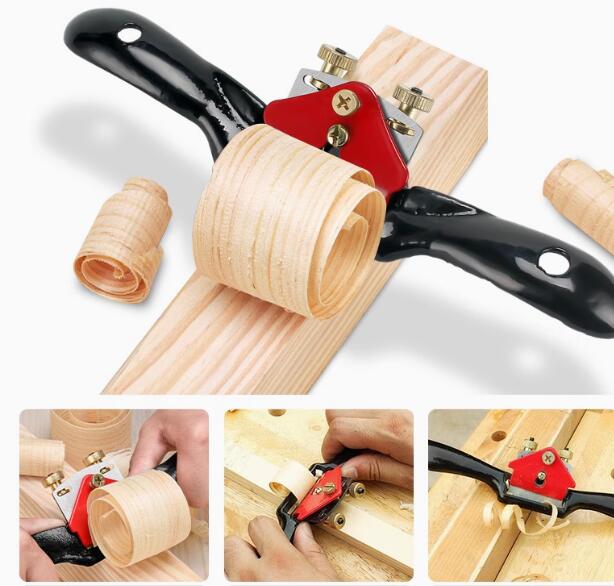Recently, I have developed a keen interest in the woodworking industry. After some in-depth exploration, I discovered that there is a lot to learn in this field. Now, I can’t wait to share what I’ve learned about the world of woodworking.
Is it difficult to become a carpenter? The answer is yes. I know a master carpenter who didn’t even know how to choose the right wood when he first started out. Once, he chose a piece of wood that was prone to warping and made a simple wooden stool.
The stool fell apart as soon as he finished making it. This incident made me realize that becoming a carpenter requires a dedication. You have to love the job and be willing to invest a lot of time and effort.

In addition, carpentry is physically demanding, as you have to carry heavy timber all day long, so good physical fitness is essential. More importantly, you need a strong determination to keep learning and improving your skills, as carpentry is a deep craft that requires long-term accumulation.
Despite the difficulties in the initial training period, with strong belief, a lot of practice and the guidance of a good mentor, carving a niche in the field of carpentry is not impossible.
In my interactions with many carpenters, I found that they all consider precision and accuracy to be the biggest challenges in their work.
Take young carpenter Li Xia as an example. When making a box with exquisite carvings, a small error in angle measurement can cause the entire carved pattern to deform, resulting in the work being scrapped and having to be redone.
This made me deeply realize that in the carpentry industry, even the smallest mistake can lead to serious consequences. Precision is a principle that carpenters must abide by.
The current situation of the carpentry industry in Australia
Strong market demand
There is a huge demand for carpenters in Australia. A friend of mine who lives in Australia told me that the local real estate industry is booming, with new homes being built and renovated everywhere, but there is a severe shortage of qualified carpenters.
He once wanted to hire a carpenter to make a wooden wine cabinet for his home, but it took a long time to find an available craftsman. This clearly shows that in Australia, the carpentry industry has broad employment prospects and a huge market gap.
Stable work and generous rewards
Being a carpenter in Australia not only offers job stability, but also a good income. As far as I know, the average annual salary of a qualified carpenter in Melbourne can reach up to 87,500 US dollars.
My friend’s neighbor is an experienced carpenter who has bought a large house with his craftsmanship and often takes his family on vacations, leading a carefree life. Such an income and quality of life are truly enviable.
The close connection between carpentry and mathematics
I originally thought that carpentry only involved working with wood, but I didn’t realize that mathematics also plays a crucial role.
Master carpenter Zhao Xiao shared his experience with me. When designing a multi-level wooden bookshelf, he made a calculation error, resulting in an impractical design that could not hold many books.
As it turns out, carpenters must be proficient in general mathematical knowledge, including fractions and decimal operations, measurement and use of measuring tools, area and volume calculations. Fortunately, the American Carpenters’ Union provides free industry math instruction for apprentices and journeymen to help them overcome this challenge.
Time and cost of learning carpentry
Generally speaking, it takes three to four years to complete a carpentry apprenticeship. During this period, theoretical learning and practical application must go hand in hand. Master Wang is an experienced carpenter who has supervised many apprentices.
One of his apprentices initially focused on practice to the neglect of theory, which led to frequent problems when making furniture with complex structures.
Later, he realized the importance of theory and worked hard to learn it, which significantly improved his skills. This proves that learning carpentry is a process that requires patience and perseverance, and cannot be rushed.
In Australia, the cost of learning carpentry varies from school to school, and is between 9,000 and 15,000 Australian dollars per year. My friend Liu had planned to go to Australia to learn carpentry and had even contacted a school, but in the end had to give up due to the high tuition fees. Therefore, the cost of learning is a factor that must be carefully considered when deciding whether to enter this industry.
Multi-dimensional analysis of the carpentry industry
Difficulty of carpentry and electrical work
Both carpentry and electrical work are physically demanding, requiring long hours of standing, climbing ladders and sometimes working in confined spaces. My childhood friend worked as an electrician for a few years before trying his hand at carpentry.
He told me that carpentry is more physically demanding. Once, he sprained his back while moving a heavy beam. However, every trade has its unique challenges, and the key is to find a trade that suits your interests and abilities.
Analysis of the types and strength of carpentry joints
In the woodworking industry, the type and strength of joints are crucial. Here are some relatively weak joint types:
- Bottom plate joints: poor connection strength. When I visited an old house, I noticed that many bottom plate joints were loose, affecting the overall appearance and function.
- Butt joints: prone to gaps. I once saw an old piece of furniture with butt joints that had widened over time, making the structure unstable.
- Mortise and tenon joints: lack stability. When I tried to make a small table with mortise and tenon joints, it wobbled and was very unstable.
- Lap joints: not strong enough. In some simple wooden structures, lap joints can easily break under pressure.
Salary overview for different carpentry positions
Salaries for different positions in the carpentry industry vary:
- Frame building: The pay is relatively high, but the exact figure is unknown. I have heard that skilled frame builders are usually well paid for large construction projects.
- Cabinet making: The pay is acceptable, but detailed data is scarce. A cabinet shop near my home is doing very well, and the craftsmen there should earn a good income.
- Carpenter assistant: The salary range is not yet clear. A young carpenter assistant I know said that although the salary is not high, he has learned many valuable skills.
- Construction frame worker: Details of salary are unclear. Frame workers seem to play an important role on construction sites and may earn a good salary.
- Apprentice carpenter: Annual salary between $36,000 and $48,000. Online forums show that although apprentice carpenters do not earn a lot of money, they can gain a lot of experience.
- Carpenter assistant: Annual salary between $34,500 and $44,000. My friend’s younger brother is a carpenter’s assistant and can support himself on this income alone.
- Cabinet fitter: Annual income between $32,000 and $38,000. Workers at cabinet factories say the job is stable and the income is fixed.
- Union carpenter: Annual income between $31,000 and $33,000. The union carpenters I met at industry events said the working environment is very good and the income can meet daily needs.
Australia currently has a severe shortage of skilled tradespeople in bricklaying, tiling, plastering and carpentry. The HIA and Master Builders are calling for entry barriers to be simplified to attract more people into the industry, while also considering immigration as an important short-term solution to supplement the workforce.
At industry forums, many companies complain that they have difficulty finding skilled carpenters even when they pay high salaries.
Is carpentry a skill or a talent?
I know a woman who knew nothing about carpentry, but developed an interest in handicrafts and started learning carpentry. From initially having difficulty holding the saw, she is now able to create exquisite wooden decorations. Her experience tells me that carpentry is more of a skill that can be mastered through learning and practice. With passion and determination, anyone can succeed in the field of carpentry.
reports that as many as 93% of carpenters experience mental health problems each year, ranking second among all occupations in the construction industry.
A carpenter friend of mine told me that due to tight construction schedules, they often have to work long hours, which causes a lot of stress and exhaustion. This reminds us that although carpentry pays well, it is also very stressful.
Is it too late to start learning carpentry at the age of 40?
Age is no barrier! I know someone who started learning carpentry at the age of 45. With his passion and dedication, he can now complete small carpentry projects independently. Therefore, age is not a barrier to becoming a carpenter; as long as you are willing to learn, you can start your carpentry journey at any time.
Conclusion
Woodworking requires a high level of mathematical knowledge, from measuring the dimensions of the wood to calculating the volume of the furniture, and then determining the layout of the project and the specifications of the materials based on the blueprint.
This involves arithmetic, algebra, geometry, calculus and statistics. I once saw a carpenter use various mathematical formulas to quickly calculate the amount of wood needed for a complex structure, which was really impressive.
Woodworking is a physically demanding job. It involves standing, walking, and crouching for long periods of time, as well as frequent heavy lifting of wood, furniture, and machinery.
In addition, woodworkers use hand tools to cut, sand, and shape wood. I once spent a day working as a carpenter on a construction site, and by the end of the day, I was sore all over. This really gave me an idea of the hard work involved in woodworking.
